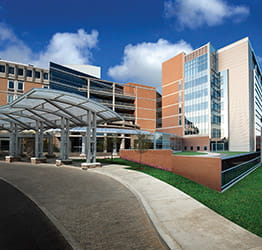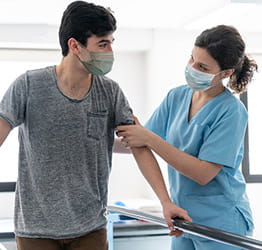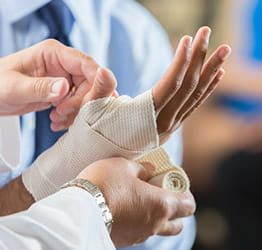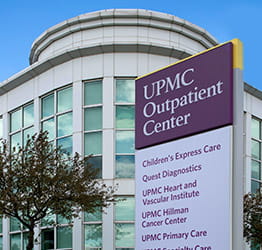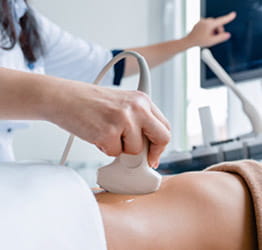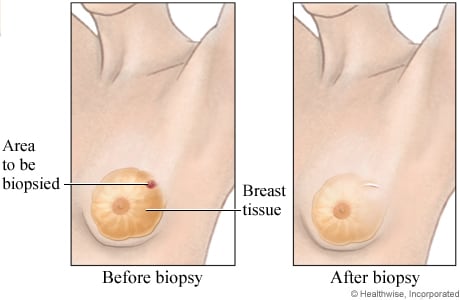What Is An Excisional Breast Biopsy?
An excisional breast biopsy involves removing a suspicious area of breast tissue so it can be checked for cancer or other breast lesions. Your surgeon may also remove an area of normal tissue around the tumor, called a margin.
Open biopsy of the breast
In an open breast biopsy, your doctor makes a cut through the skin to remove part or all of the abnormal breast tissue. The tissue is examined under a microscope.
© 2016-2025 Healthwise, Incorporated. This information does not replace the advice of a doctor.
Is an excisional breast biopsy considered surgery?
Yes. An excisional breast biopsy is a type of surgery performed in a hospital or surgery center by a breast surgeon.
Is lumpectomy the same as an excisional breast biopsy?
Yes. A lumpectomy and excisional biopsy both involve removing a mass from your breast, and the terms are often used interchangeably.
Why Would I Need An Excisional Breast Biopsy?
Your doctor might recommend an excisional breast biopsy because:
- The results of a less-invasive biopsy technique, such as core needle biopsy or fine needle aspiration, are unclear.
- To remove a high-risk lesion from the breast.
- To remove an entire suspicious area in the breast.
- You are unable to have a less invasive biopsy procedure.
Alternatives to excisional breast biopsy
Other methods of obtaining tissue for biopsy include:
What Are the Risks and Complications of Excisional Breast Biopsy?
Like all medical procedures, excisional breast biopsy comes with some risks, including:
- Bleeding.
- Cosmetic changes to the breast.
- Fluid collection at the surgery site.
- Infection.
- Nerve damage.
- Scarring.
What Should I Expect From Excisional Breast Biopsy?
Before: How to prepare for excisional breast biopsy
Your doctor will explain the procedure to you and answer your questions.
To prepare for the procedure, you should:
- Ask your doctor if you need to fast for a certain period of time prior to the procedure. Your doctor will inform you if you need to fast and, if so, how long to fast (typically overnight).
- Stop taking aspirin, aspirin-containing products, and NSAIDs seven days before your biopsy. If you have questions or concerns, please contact the breast center for clarification.
- Contact your doctor if you are taking blood-thinning medication, such as Coumadin®, warfarin, heparin, Pradaxa®, or Plavix®, to find out if you can safely stop the medication before your biopsy procedure.
- Let your care team know if you are pregnant or think you might be pregnant.
- You may meet with the anesthesia team before surgery. They will discuss with you what medicines you should take the morning of surgery.
On the day of your procedure, you will receive a call from the surgery center or hospital telling you what time to arrive at the facility. This might be 30 to 90 minutes prior to your scheduled procedure time. Be sure to bring your photo ID and health insurance card(s). Leave valuables such as cash and jewelry at home.
You should wear a two-piece outfit (shirt and pants/shorts) and bring a sports bra with you. Wearing a supportive bra after your procedure can minimize breast movement and discomfort. You may be given a surgical bra after the procedure.
Presurgical localization procedures
Before your excisional breast biopsy, your doctor may perform a localization procedure so they can precisely remove your breast tumor if it can’t be easily felt or seen.
Localization procedures include:
- Image guided seed localization — A seed that is about the size of a grain of rice is placed in the center of your tumor a few days before your surgery. During your biopsy procedure, your surgeons will use a special tool to locate the seed so they can precisely remove your tumor.
- Needle localization — Also known as fine wire localization, needle localization uses ultrasound, MRI, or mammography imaging guidance and a small needle to place a thin wire that marks the location of a suspicious mass in your breast. This is usually done the morning of surgery before your procedure.
How long does excisional breast biopsy take?
An excisional breast biopsy procedure will take 30 to 60 minutes.
During your excisional breast biopsy
When you arrive at the hospital or surgery center, you will meet with your care team for final preparations.
You will receive an IV in your hand or arm. You may receive either general anesthesia to put you to sleep or local anesthesia to numb the biopsy area with a sedative to make you drowsy.
During your excisional breast biopsy, your surgeon will:
- Locate your tumor using a marker placed before surgery, if applicable.
- Make an incision in your breast.
- Remove the suspicious area and a margin of normal tissue around it.
- Send the tissue to the pathology lab to check for signs of cancer.
- Stitch or glue your incision closed.
Recovery after excisional breast biopsy
After your procedure is complete, you will be monitored in the recovery area. Most people are discharged the same day. You will need to arrange for someone to drive you home from the hospital.
You may have bleeding, bruising, or swelling that will go away in a few weeks. You may also have scarring or notice a change in the shape of your breast.
During your recovery, you should:
- Ask your doctor if it is safe for you to take acetaminophen to manage mild pain or discomfort.
- Apply ice to your breast for 15 to 20 minutes every two hours for the first 24 hours after your biopsy to reduce bruising and swelling.
- Keep your bandage dry and leave it in place for 24 hours after your biopsy. Do not allow your biopsy site to get wet for 24 hours after your biopsy.
- Wear a sports bra or surgical bra for the first few days after your biopsy, around the clock, except when bathing.
- Avoid strenuous activity for several days after your biopsy, including activities that require pushing, pulling, or lifting more than 10 pounds.
- Ask your doctor when it is safe to resume taking blood-thinning medications, if applicable.
When to call your doctor about complications
Call your doctor right away if you notice signs of infection or complications, including:
- Drainage from your incision site.
- Excessive bleeding.
- Fevers/chills.
- Pressure.
- Redness.
- Swelling.
- Warmth.
What is the recovery time after excisional breast biopsy?
Most people can return to their normal activities within one to two weeks after an excisional breast biopsy.
How will I get my biopsy results?
After your excisional breast biopsy, our team will make sure you receive the follow-up care you need.
Our experts understand that waiting for biopsy results can be a stressful experience. It is important to remember that most breast biopsies turn out to be benign (noncancerous). The nurse will call to inform you of your biopsy results as soon as they receive the results from the pathology department. This usually takes seven to 10 business days after your biopsy.
What happens if breast cancer is detected?
If your biopsy indicates cancer, your breast surgeon will discuss treatment options with you, or you will be referred to the UPMC for treatment if the procedure was performed by a general surgeon.
UPMC is nationally recognized and offers the most advanced treatment options available, including surgery, radiation, chemotherapy, hormonal therapies, and complementary therapies.
Physicians specially trained in the management of breast cancer will review your case with you and develop a personalized treatment plan. Our supportive care team can help you and your loved ones manage the many emotions and questions that may arise throughout the diagnosis, treatment, and recovery process.
Why Choose UPMC for Excisional Breast Biopsy?
When you choose UPMC for excisional breast biopsy, you will receive:
- Access to advanced imaging technology — Our experts use the latest imaging technology to quickly and accurately diagnose and treat a full range of health conditions.
- Convenient imaging services — Imaging appointments are available at multiple locations with hours that fit your schedule.
- Multidisciplinary care — We partner with surgeons, medical oncologists, radiation oncologists, radiologists, reconstructive surgeons, and other medical experts to treat cancer and other disorders.
By UPMC Editorial Staff. Last reviewed on 2025-09-18.





